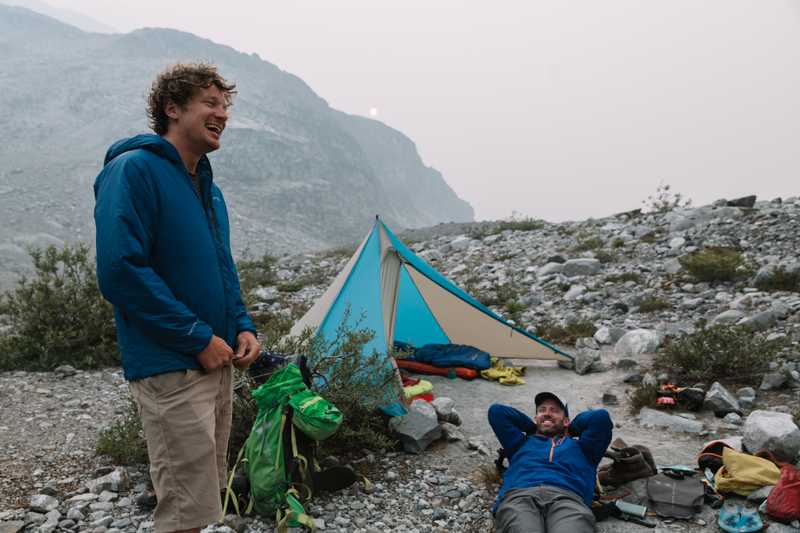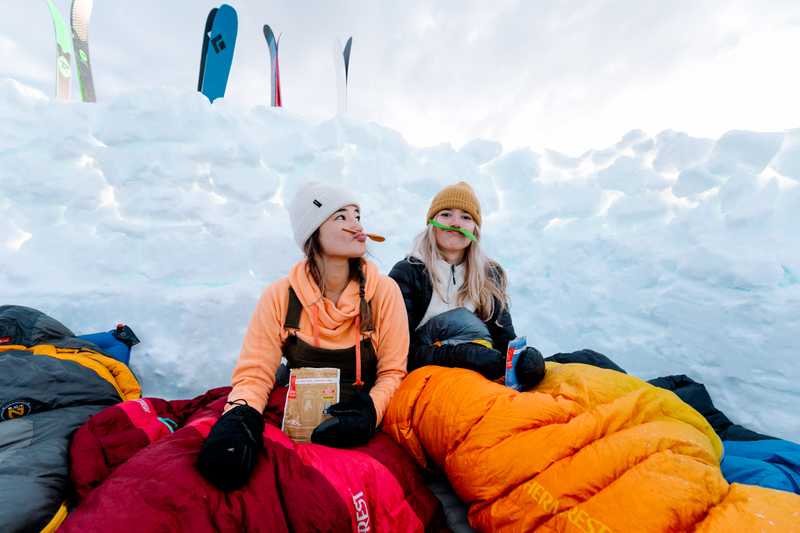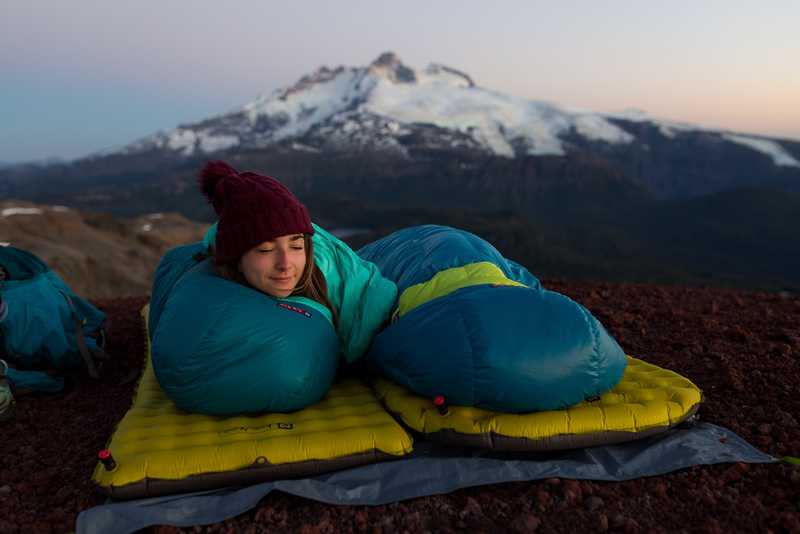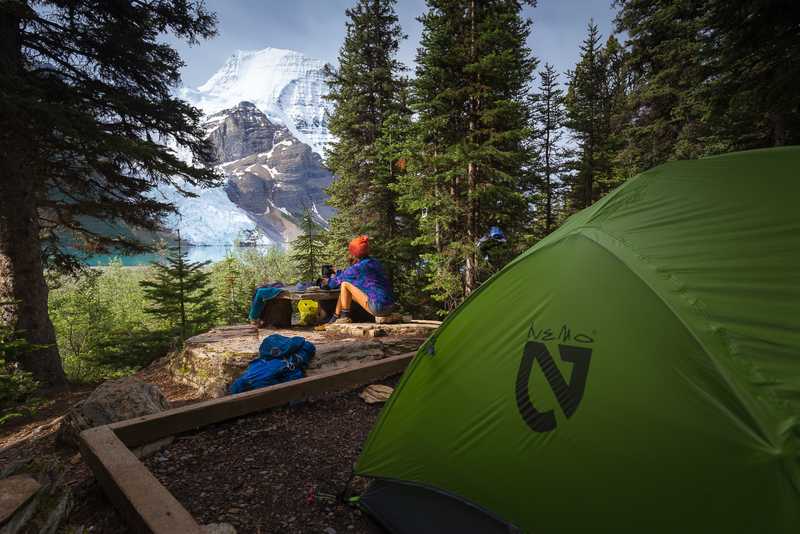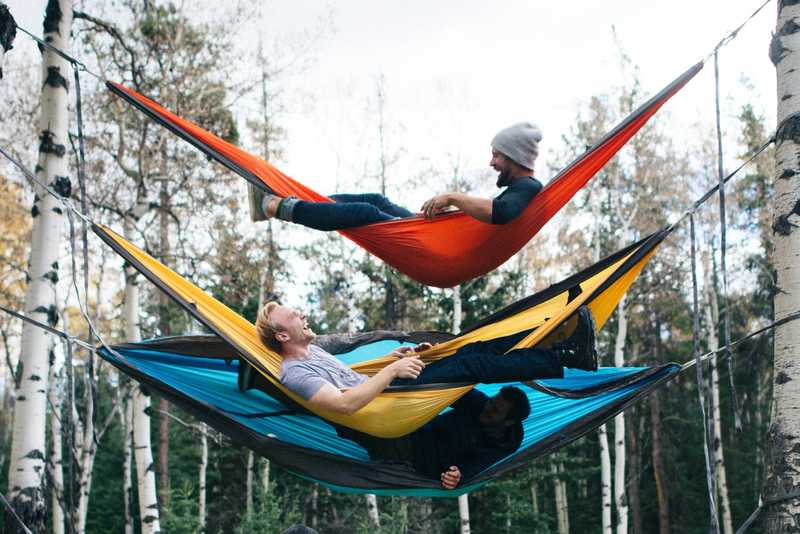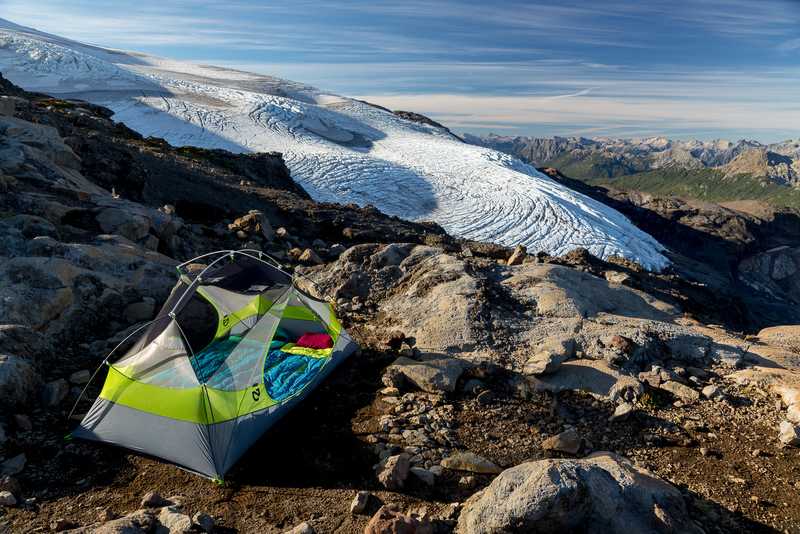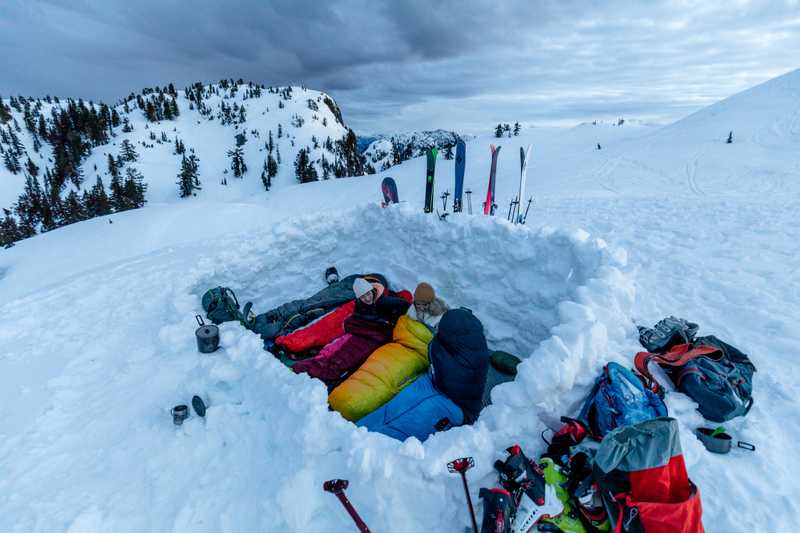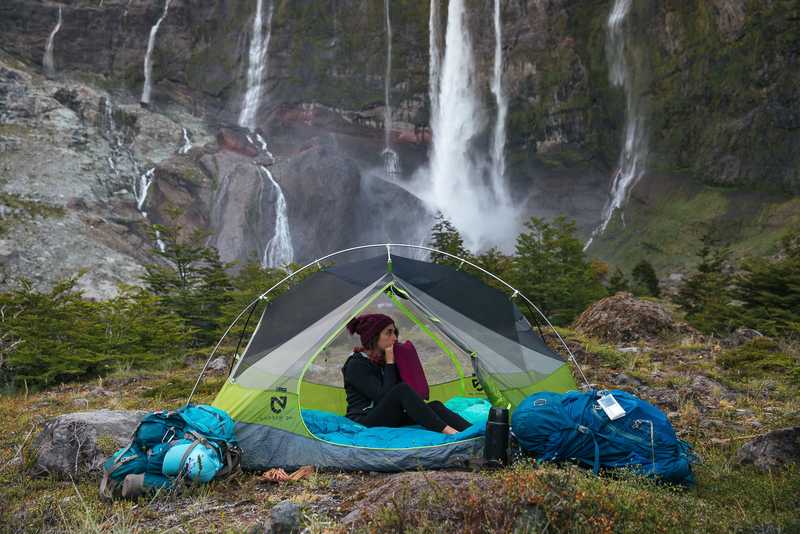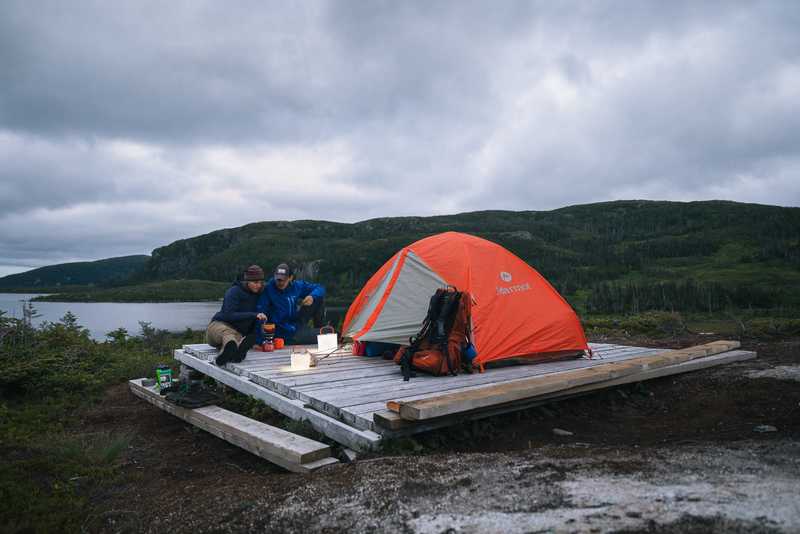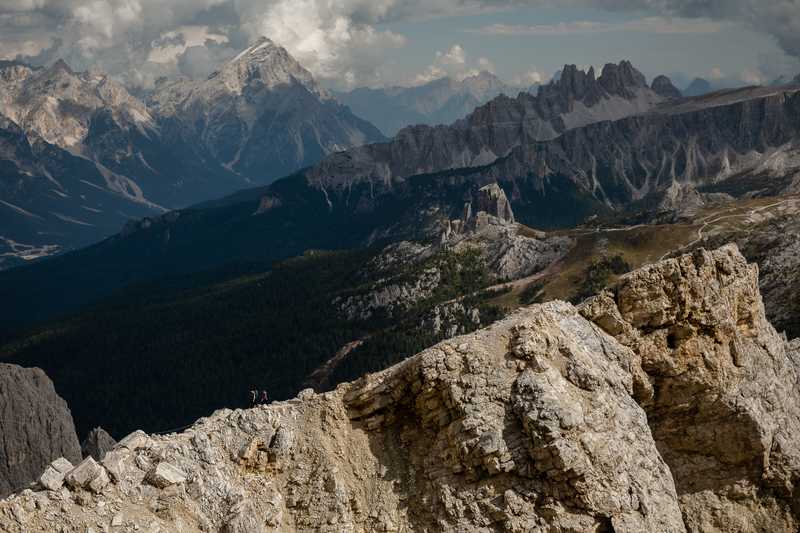Sleeping under the stars is one of lives great joys.
Waking up with a pinecone poking into your back because your sleeping pad deflated in the middle of the night is… not.
When your beauty rest is at the mercy of Mother Nature, you’ll want to be well prepared. Here’s how to get the best sleep possible in the great outdoors.
Gear You’ll Need
Your “sleep system” refers to every part of what you need to sleep while camping.
Shelter
You’ll need something on top of you to keep yourself protected from rain, snow, wind, and bugs.
- A tent will keep you sheltered from all of the above with minimal hassle. Just make sure it doesn’t have any holes or other structural problems.
- A hammock will require setting up a tarp on top of you, and/or a net around you to keep you safe from the elements. This can take some technical know-how, but the process is straightforward.
- A bivy sack can be a bit claustrophobic, but it’s also the quickest way to make yourself feel like a cowboy under the stars. They can be a great cheap and light option if you don’t need a lot of room. Just make sure the weather will be nice.
-
A tarp can be a great option if you want an ultra-cheap way to keep yourself protected from the elements. Just make sure you know how to set it up. The last thing you want is to be fumbling around with paracord in the rain while your gear gets soaked.
Sleeping bag or quilt
You’ll also need something on top of you, unless you sleep without blankets like some kind of freak.
- Sleeping bags have been the go-to option for campers for a long time, and for good reason. There are so many different manufacturers that you can find an affordable bag for your exact needs relatively easily.
- Quilts are a newer trend. Instead of zipping you up inside them, quilts lay on top of you (you know, like a quilt). They’re big enough that you can wrap them around you. And they’re just as warm as most sleeping bags — though they don’t come with a hood like some bags do.
Sleeping pad(s)
This is the most critical part of your sleep system. Because you lose much more body heat through the ground than you do through the air, it’s important to have roughly twice as much stuff under you as you do on top of you. If it’s going to be chilly, look for a sleeping pad with a high “r-value” (thermal resistance).
You can opt for a foam or inflatable pad, or both. Foam pads are lighter and cheaper, but less comfortable. Inflatable pads are heavier and more expensive, but comfier and often warmer.
Pillow
These can range from a high-tech ultralight inflatable pillow to a stuff sack filled with clothes. But if you use a pillow at home, you’re going to want something to support your head when you’re camping.
Tents vs. Hammocks
The first thing you’ll need to decide is whether to sleep on the ground or in a hammock. Online you’ll find many people who swear by hammocks — and just as many who can’t stand them. I recommend trying both to see what you like.
Entry-level camping hammocks are quite cheap and light. Bring one along for your next trip and try a midday snooze. You might fall in love.
Sleeping in a Tent
Pros:
- What you see is what you get
- Little technical know-how required
Cons:
- Heavier
- Can be less comfy
- Possibility of a rock or stick poking you in the back
- Can be more expensive
At one point or another, you’ve probably slept on the floor — whether it was on a camping trip, at a friend’s house, or after a rough night. So, to some extent, you know what you’re going to get. There’s no swaying motion or any particular way you have to orient yourself. Just lie down and get to snoozin’.
Even the clunkiest tents nowadays are very easy to set up. And unless you’ve got a hole in it, you won’t have to worry about being exposed to the elements like you are with a hammock.
And you can fit as many people inside as the tent supports.
Sleeping in a Hammock
Pros:
- Lighter
- Can be less expensive
- Can be comfier
- No rocks or sticks will poke you in the back
Cons:
- Can feel awkward
- Technical know-how is required if it rains
- Can’t fit multiple people (unless you want to get very cozy)
Outdoor hammocks have become refined to the point that they’re basically miniature tents suspended between trees.
The gentle rocking motion immediately lulls some people — including myself — to sleep. They’re supremely comfortable if you do it right.
You’ll have to figure out how to sleep at an angle. A common rookie mistake is sleeping straight, with your body parallel to the hammock itself. You want to angle yourself so your feet and shoulders are stretching out the material, to create a bigger space. This takes some getting used to.
If it rains or snows, you’ll have to set up a tent above your hammock in a way that won’t dump water on you in the middle of the night. This is a straightforward process — but it’s not one you want to get wrong.
And if it’s buggy, you’ll need to make sure you’re surrounded by a net. Otherwise, you’ll set yourself up as an overnight mosquito buffet.
Sleeping Bags vs. Quilts
Sleeping Bags
Pros:
- Many options
- Can come with a hood
- Can be cheap
Cons:
- Can take up more space
- Can get too warm when it’s hot
- Can’t lie flat on top of you
You can find a cheap sleeping bag for a summer camping trip just about anywhere. And you can find a down-filled mummy bag that’ll keep you toasty on the frozen tundra. Whatever you need, you’ll be able to find it. And many people enjoy the hug-like embrace of a bag when they’re sleeping under the stars.
Types of Sleeping Bags
- Rectangular: These are the most basic sleeping bags, with lots of room to move around.
- Curved rectangular or “barrel”: These have a rounded top to keep drafts out. They can look a little like mummy bags, depending on the type.
-
Mummy: These bags taper at the bottom and come with a hood to keep you warm.
Quilts
Pros:
- Lighter
- Smaller
- Able to regulate temperature
- Room to move around
Cons:
- Can be expensive
- Fewer options
Quilts lie on top of you like a blanket. Since sleeping bags don’t provide a lot of insulation underneath you, because your body weight squishes the material, some genius decided to take it out. Some have a small zipper or some snaps that creates an enclosed space for your feet. But that’s optional.
Since you’re not enveloped and zipped in, it’s easier to stay cool in the summer using a quilt.
For ultimate warmth in extreme conditions (think: Antarctic expeditions) quilts can’t stand up to a top-of-the-line mummy bag. But they can keep you warm well below freezing.
Inflatable Sleeping Pads vs. Foam Pads
Safety First
If you’re going to sleep outside when it’s cold or chilly, pay attention to your sleeping pad’s “R-value.” This refers to the thermal resistance of the pad, or how warm it’ll keep you. Remember: nothing lowers your body temperature like lying on the cold ground.
Inflatable Sleeping Pads
Pros:
- Comfier
- Warmer
- Pack down smaller
Cons:
- More expensive
- Heavier
- Can deflate
The comfort of an inflatable sleeping pad is hard to beat. If you’re only going to use it in the summer, a cheap one from Amazon will do the trick for well under $50. But if you need it to preserve some heat, invest in a good one, like a Therm-a-Rest or Klymit. You’ll thank yourself later.
Always remember to bring a patch kit if you bring an inflatable pad. It should come with one. If it doesn’t, a small piece of duct tape can do in a pinch.
Foam Sleeping Pads
Pros:
- Cheaper
- Lighter
- Won’t deflate
Cons:
- Less warm
- Less comfortable
- Bulkier (but can strap to the outside of your pack)
Foam pads can be a solid budget or ultralight option. I used an accordion-style eggshell pad for many years when I was in Scouts. It was super light, and it saved room in my pack for other goodies.
But when I switched to an inflatable pad, I knew there was no going back. The thin foam simply doesn’t provide as much cushion as an inflatable pad. Now, I use a Klymit Insulated Static V Lite, which has a high r-value and packs up light and small.
If you like a firm bed at home — or if you’re concerned with going as lightweight as possible — a foam pad can be a great option.
Doubling Up
There’s no rule that says you can’t take both a foam pad and an inflatable one! This is a great way to increase your r-value (warmth) if you’re going on a colder trip but only have a three-season sleeping pad. That way you don’t have to buy a whole new pad, and you’ll add minimal weight to your pack.
Types of Camping Pillows
Inflatable Pillows
Many outdoors companies sell inflatable pillows. These can range from cheap to pricey, but they all fit the same balloon-like structure. Some will be better than others. Look for a good warranty and good reviews.
Memory Foam Travel Neck Pillows
They’re not as light or as small as inflatable ones, but they won’t deflate on you. And they can pack down pretty small — or, if it’s not raining, clip to the outside of your pack to save room.
Actual Pillows (Like, From Home)
If you’ve got room in the car, why not live luxuriously? This option is unfeasible if you have to hike or paddle into your site. And you’ll risk getting your nice linens dirty. But comfort-wise, nothing comes close.
Stuff Sack Full of Clothes
Because I’m a tightwad, this is my go-to technique. Just take the bag your sleeping bag packs into, and fill it up with your extra clothes.
This is also a smart way to avoid taking extra gear — and it can work quite well once you get it down.
Just make sure that that bag is packed pretty tight, or you’ll wake up with your head on the ground, between two mini piles of clothes.
Pro tip: put your down jacket or cushiest clothing piece on the side of the bag your head will rest on.
Final Thoughts
Mattresses come in a million different sizes, price points, and cushiness levels — and so do camping sleep systems.
For safety’s sake, pay attention to your sleeping pad’s r-value. Higher is better when it comes to retaining warmth. It doesn’t matter how warm your sleeping bag is if your body heat is being sapped by the cold ground.
For everything else, there are a lot of trade-offs to consider, including price, weight, comfort, and durability. It’ll take some experimenting to figure out how you like to sleep.
But once you do, there’s nothing better than waking up refreshed after a perfect night’s sleep in the great outdoors.
Pack with Packup
Take the guesswork out of trip preparation using our Trip Generator – simply choose your accommodation, transportation, and outdoor activities to form the foundation of your customizable packing list and trip. Our digital platform ensures that you'll never forget to pack everything that you need for your adventures.

